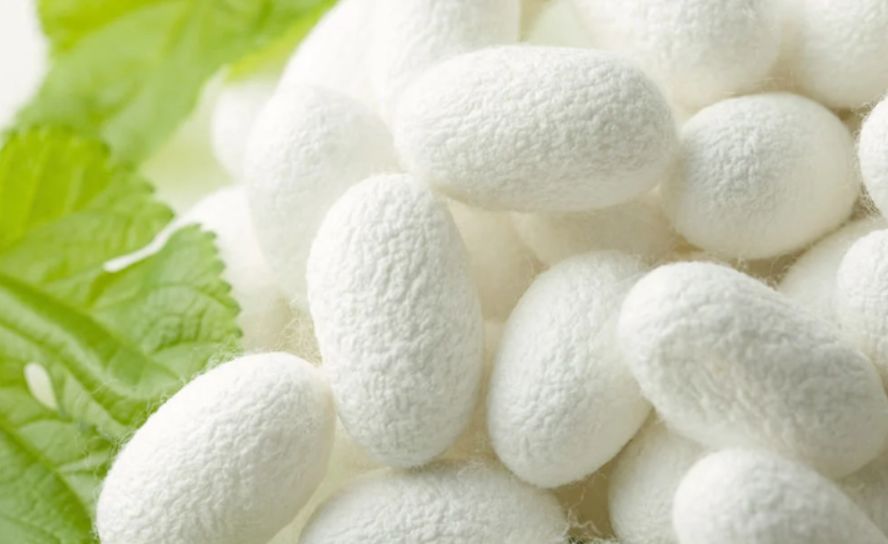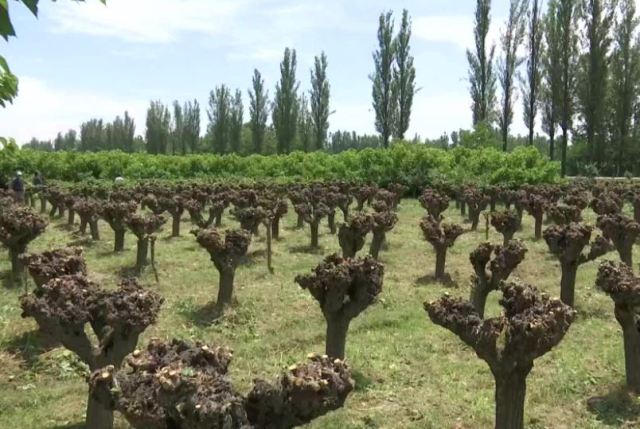Post Covid, higher education in Northeast India sees uptick
 ]
]
Nani Gopal Mahanta, Academic/Education Advisor to the Assam Government and Professor and Head of the Department of Political Science and Director of Global Studies Centre at Gauhati University says: “With the opening of Act East Policy, several opportunities have sprung up. The policy is not just related to trade and commerce, as is widely known, but also for people to people contact. We’ve had three batches of international students studying in our university so far.”
Mahanta further adds that because of the Covid-19 situation, things are currently going slow, but he is quite hopeful that as the situation improves, more students from across the globe would show interest.
“While we’re doing our best to promote our education and culture, the government needs to provide scholarship opportunities and perks to international students, like is done in other parts of India. When foreign students come and study in the North East region, they become ambassadors for our culture. This way we could reach out to a wider mass,” he said.
According to statistics, most of the foreign students come from Nepal, Afghanistan, Bangladesh Africa, Bhutan, Nigeria, Lao, Thailand, Sri Lanka, and Iran, with many of them seeking the B-Tech engineering degree, and a large number of many others taking the BBA degrees. Other popular undergraduate courses for foreign students are Pharmacy, Medicine, Computer Applications, Fashion, Sociology, Dentistry and Nursing.
“I would prefer my kids studying here in Assam because in the present times our state is at par with the other states in terms of education and infrastructure. Many good names in the educational scenario offer courses from engineering to management, allied health sciences, humanities, medicine, law and more. The hostels have modern facilities and the overall development of students is a focus area. The placement records of the institutions give an insight to their profile. This makes it a lot easier for parents to choose the right place of education for their children. Above all, I feel that studying at one’s own place saves unnecessary hassles caused by issues like travel, food, homesickness, and language problem,” says Mr Roy, a parent of a student learning at Assam down town University.
“The consistent efforts of AdtU to be at par with the global standards in education has resulted in higher inflow of students from other states like Uttar Pradesh, Jharkhand, Kashmir, Chennai, etc apart from the north eastern states to our university. AdtU offers world-class experience in terms of campus life, placements and industry exposure,” added Narayan Chandra Talukdar, Vice Chancellor of Assam down town University.
As winds of change blow through institutions of higher learning in North East India, stakeholders stress on giving the region the attention it deserves to be transformed into a center for educational tourism.
Turkmenistan names volume of produced silkworm cocoons
 ]
]
If You already have a subscription, please log in:
If You do not have a subscription, then You can get it clicking on this button:
Sericulture in Jammu & Kashmir -
 ]
]
Touseef Rasool Dar
Sericulture is one of the oldest industries in India and Asia. Sericulture is an agro-cottage, forest based industry, labour intensive and commercially attractive economic activity falling under the cottage and small-scale sector. The silk is the final product of this industry. It particularly suits to rural population working with agriculture, entrepreneurs and artisans as it requires low investment with potential for relatively higher returns.
It provides income and employment to the rural poor especially, farmers with small land-holding marginalized and weaker sections of the society. Kashmir is a non traditional sericulture state producing Mulberry and Tasar silk. The bivoltine sericulture development has been one of the priority sectors of Indian silk industry but its production is yet to meet the targets. Sericulture being one of the traditional industries in Kashmir is a land mark of our cultural heritage. There is no exact record as to how and when exactly this industry originated in Kashmir. However there is mention of silk and mulberry tree in Rajtarangini-the oldest written chronicle of Kashmir. The reference in Mahabharta and Ramayina-the two great epics establish that sericulture was being practiced in Kashmir from times immemorial. There is evidence in ancient Sanskrit literature as, that the original home of silk is Kashmir.
Sericulture assumes a special significance in the state of Jammu and Kashmir. This is the only traditional Univoltine belt in India capable of producing silk comparable to the qualities of exquisite imported raw silk of standard quality in the international markets. Its climate is temperate and congenial for rearing both Univoltine and bivoltine silk worms’ races. In view of the limited scope for pollution oriented heavy industries, sericulture has assumed added significance in the industrial planning of the state. Moreover the operation of this industry does not entail any import of raw material from outside the state at exorbitant transport costs. Sericulture is one of the oldest occupations in Kashmir.
The industry provides part time employment to about entrepreneur 30,000 families by way of silk worms rearing, besides providing employment to 5,000 persons on regular basis in the public sector. Besides, silk industry generates employment to about 10,000 weavers on the full time basis, in about 2,000 units in the valley in private sector. Thus about 2.15 Lakh people are engaged on full time or part time in this industry. The silk industry was a state monopoly till 1988 and farmers were getting no benefit out of the sale of cocoons as per floor price fixed by the government. A deep thought was given to regain its lost glory. The industry was de-monopolised and ownership of plant was transferred to the farmers with the permission to sell surplus leaves and earn money.
This helped from saving the industry from vanishing. Much care was taken by the farmers in preserving the trees which resulted in increased demand of the plant. Silk worms seed is supplied free of cost to the rears and cocoons are purchased by the government and private entrepreneurs. Rearing of silkworm requires scientific knowledge and technical skill. For the development of healthy silk, two basic seed stations have been established at Udhampur and Mirgund.
Work on the Qazigund Nursery is also under progress. Presently there are about 7 lakh mulberry trees – 53 per cent (370,000) are in Jammu and 47 per cent in Kashmir. There are 2800 villages and 33000 households in which sericulture is generating an income of Rs 2026 lakh annually and 3.5 lakh man days activities are associated with this profession. Sericulture department now has 173 nurseries spread over an area of 963 acres, and 374 mulberry blocks over an area of 2215 acres across the state. Out of these, 1500 villages are situated in Kashmir and the remaining 1300 villages in Jammu.
Inadequacy of mulberry leaves and damage caused by insects and pests are the major problems in the development and expansion of sericulture. Now the Sericulture Development Department is laying stress on raising dwarf mulberry trees to supplement and replenish the traditional tall mulberry trees. As a result of these efforts, the dwarf varieties have increased substantially in the jammu & kashmir. The government of Jammu and Kashmir is committed to boost the sericulture industry for the benefit of cocoon growers and generate employment for the unemployed youths. Since Kashmiri cocoons are famous due to its purity, people from across the world prefer to purchase silk products from the valley. The government has already announced several small schemes, including free plant material and distributing a free rearing kits that growers are using during rearing process of cocoons.Sericulture is an agro based industry and has been considered as an excellent sector for generation of employment both in Rural and Urban areas, through a series of activities like raising and planting of Mulberry plants, Silk Worm rearing, production of Silk Worm seed, reeling of Silk Cocoons, Making of Silk fabric, printing dying and finished product making and their marketing. Besides this raising of Mulberry Plantation is environmental friendly and serve the purpose of social forestry.
The Jammu and Kashmir government few decades back has setup large filatures at Jammu and Srinagar to promote and develop sericulture activities in the state. Apart from the filatures, a weaving unit was also setup at Srinagar for the utilisation of yarn produced in these filatures. This unit is presently under the umbrella of Jammu and Kashmir Industries Ltd. (JKI) which has 180 other units in Jammu and Kashmir. The Silk Weaving Factory was established in the year 1921 in the premises of Govt. Filatures (Silk Factory Rambagh). However, in the year 1937 the factory was destroyed by fire. It was shifted to Rajbagh in 1938 where it is presently located. The site of the factory is an ideal one as it is situated on the bank of the river Jhelum. The plant is spread over an area of about 90 Kanals (489600 feet). This factory has main building consisting of three departments, viz. throwing section, warping section and weaving section. Besides there are two single storied showrooms, a single storied building for the management, two huts one is meant for dispensary and time keepers and the other one for workers union respectively.
There is no separate electrical installation for the factory. As a result is has to suffer power failures, voltage breakdown off and on. The factory has glorious past. It has been engaged for the last seventeen years in the manufacturing of high quality silk fabrics. The records revealed that the factory has played a vital role during the Second World War when parachute was manufactured in thousands of meters in the shifts and exported to U.K for the manufacture of parachutes used by British and American army in the war with German. The investigation entitled “Monetary Analysis of Govt. Silk Weaving Factory Rajbagh Srinagar” has uncovered that the well established production line is confronting annihilation.
The yearly production has diminished considerably and the manufacturing plant is running under substantial misfortunes. There has been a fall of 69 percent in the production from 2010-2011 to 2015-2016. A comparative declining pattern is appeared by the yearly deals figures of the manufacturing plant. The business volume demonstrates a lessening of 66.27 percent from 2010-2011 to 2015-2016. The working of manufacturing plant exposes an important certainty that the state silk industry has appeared poor performance. The central point in charge of the decay of Kashmir silk Industry as a rule and Govt. Silk Weaving Factory specifically is the intense deficiency and substandard raw materials.
Therefore there has been a substantial lessening in the production of silk textures which has not enabled the fixed expense to spread completely, bringing about surprising expense of production. This has hampered the development of the unit. Further, the average expense per meter of silk texture created is high when contrasted with average selling cost, bringing about substantial misfortunes to the unit. The jammu and kashmir government must take steps to boost sericulture in the state and to engage more people to generate huge employment.